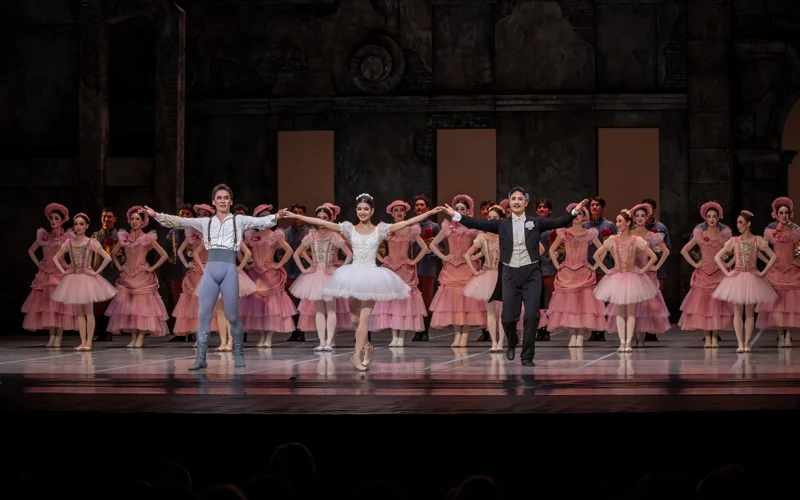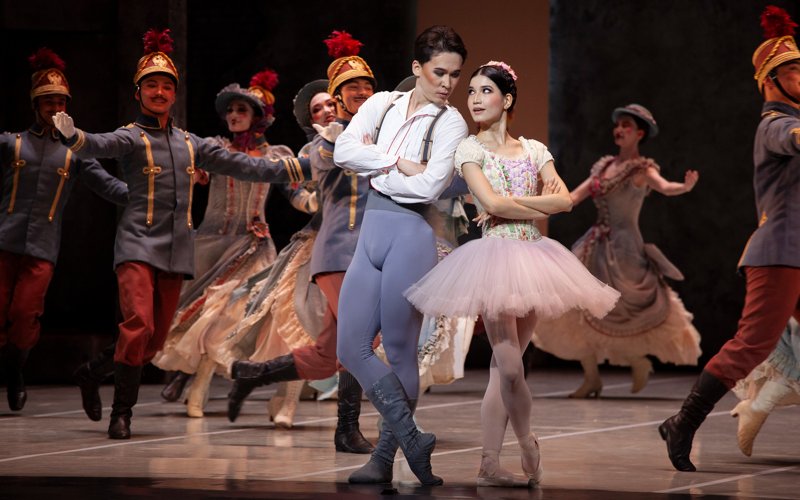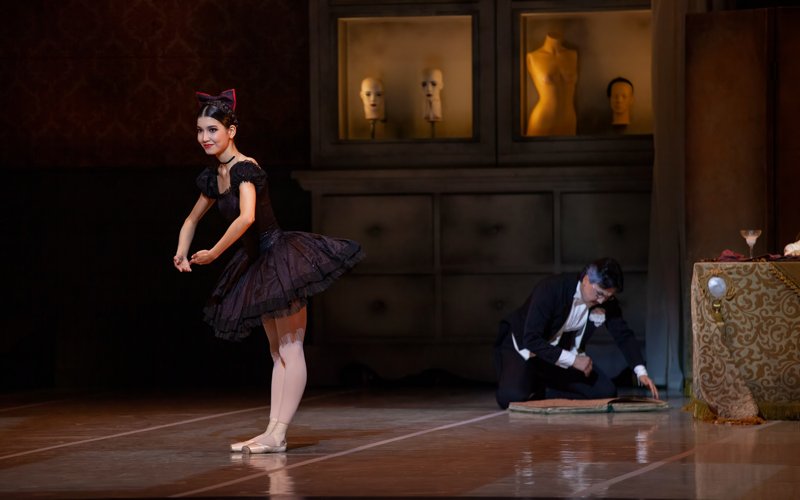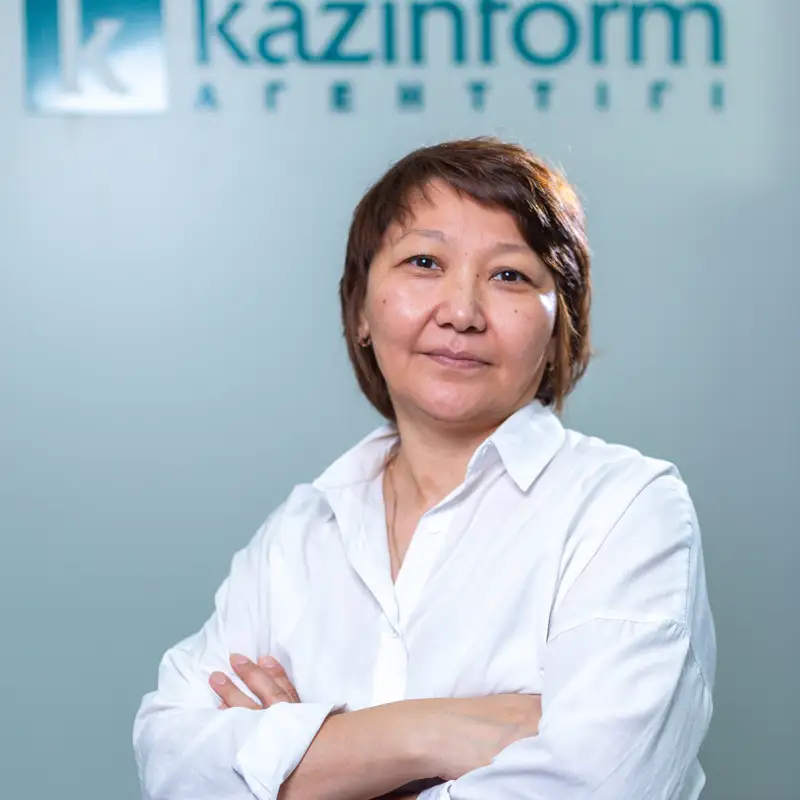Mysterious doll with Kazakh soul, or how Astana Opera Ballet charmed Saint Petersburg
On April 22, the French Coppélia, choreographed by the great Roland Petit to Léo Delibes’ music, came to life performed by the Astana Opera Ballet at the Dance Open International Festival, one of the ten largest ballet festivals in Europe. This tour performance became a vivid cultural dialogue – artistically precise, keenly felt, emotionally charged, Kazinform News Agency learnt form the Astana Opera press service.


On the same day, another important event took place in Saint Petersburg – the performance of Astana Opera’s principal dancer, Honoured Worker of Kazakhstan Bakhtiyar Adamzhan and the opera house’s bright ballet soloist Anastasia Zaklinskaya at the Andris Liepa 6:0 gala concert. The anniversary evening was held at the Oktyabrsky Big Concert Hall as part of the Autographs and Images project.
The production of Coppélia, full of sunshine and humour, sparkled with original zest in Kazakh dancers’ performance. The ballet, which became a part of the opera house’s repertoire in 2019, has become dear to the dancers’ hearts, which was felt in every scene: from the city bustle to the magical transformation of Dr. Coppélius’ workshop.

Roland Petit, who turned E.T.A. Hoffmann’s sombre story into a comedy masterpiece, gave the dancers and audiences space for play and irony. His version of Coppélia is a ballet, where dance is inseparable from acting, facial expressions and the subtlest nuances of mood. The Astana Opera Ballet handled this task masterfully.
As Franz, Honoured Worker of Kazakhstan Yerkin Rakhmatullayev was sincerely charmed by Swanhilda and got into a whirlwind of intrigue with boyish enthusiasm. His hero – engaging, naive and lively – aroused sympathy from his first appearance onstage.

Swanhilda portrayed by Shugyla Adepkhan became a real discovery for the Saint Petersburg audience. Her heroine, witty, decisive, easily transforming from a playful girl into a mechanical doll, essentially led the entire performance. Dance technique, facial expressions, internal energy – everything driven the character interpretation. The viewers could not resist: in the transformation scenes, enthusiastic applause resounded in the hall even before the end of the mise-en-scène.
Dr. Coppélius, performed by Honoured Worker of Kazakhstan Rustem Seitbekov, was not frightening, but rather a touching dreamer, seeking a substitute for warmth missing from his life. His figure, comedic and a little sad at the same time, added dimensionality to the ballet.
Expressive set design and lighting ideas allowed the audience to focus on minutest details. The workshop scene made a particularly strong impression: mesmerizing play of light and shadow blurred and rippled fleeting boundaries between reality and fantasy.
The ability of Astana Opera’s ballet dancers to be in constant dialogue with the viewers – through glances and gestures – sparked special admiration. After the performance, the applause did not cease for a long time, and the dancers came out to take a bow several times.

“The company’s skill is of the highest level. The corps de ballet works splendidly: both character dances and the most difficult ones are performed superbly. The dancers handle them brilliantly. And the soloists are simply incredible. The ballerina is a real miracle: graceful, refined, light, artistic. She has a wonderful partner – with magnificent technique, airborne jump and a strong stage charisma. Dr. Coppélius is a ballet performer who can be called a real actor with deep stage culture,” says Olga Rozanova, ballet historian, critic, Master of Art History, Professor at the Vaganova Academy of Russian Ballet and the Herzen State Pedagogical University of Russia. “I would like to congratulate the opera house on such a thrilling ballet production – exclusive, as they say now. We have never had such a ballet before. Yes, in Moscow we saw various productions by Roland Petit: Le Jeune Homme et la Mort, Notre Dame de Paris, even Carmen. However, Coppélia – so unexpected, with nuanced humour and elements of the grotesque – for the first time. This is a truly original work, with the bright and exciting directorial vision of Roland Petit. The ending is especially touching: Coppélius is left alone, with a broken doll, and you feel sorry for him. He realized that he was deceived. A cheerful performance turns into a deep human note. This is a strong and unexpected turn.”
“The corps de ballet in this performance is an ensemble in the full sense of the word. Both the ‘Toy Soldiers’ and the ‘Girls’ are like living dolls, grotesque, emphatically exaggerated, with complex, technically rich dances, including crawling on their knees and body plastique. Against the background of this ‘puppetry’, the main characters appear even more full of life: they are capable of devotion, of struggle, of choice, of the realization that there is nothing more important than true love.”
“I would like to separately mention our Saint Petersburg native, prima ballerina of the Mariinsky Theatre, who has been leading the Kazakh ballet company for many years now – Altynai Asylmuratova. Thanks to her, the company is following its own unique path, forming an original repertoire and raising the performance bar to a truly sublime level. I sincerely congratulate all the répétiteurs who worked on this production. I congratulate the company on its great luck and brilliant success!” Professor Rozanova concluded.
“This is not my first time attending the Dance Open festival. Today I had a chance to see the Astana Opera Ballet’s performance at the Alexandrinsky Theatre, and it was incredible. The performance struck me with its sophisticated sense of style. I would like to note that not every ballet company is entrusted to perform this production, the dancers must have a certain level of skill for this. It is obvious that Astana Opera has the required mastery. Shugyla Adepkhan demonstrated a rare combination of lightness, stage presence, sincerity and utmost technique, and she is a true actress on top of that. Franz charmed us with his musicality, flowing lines and natural charisma necessary for this role. Dr. Coppélius especially attracted my attention. The performer was able to convey inner drama, but did not deprive his character of comedic element. He also showed that his hero is deeply human – masterful work built on subtle psychological nuances,” viewer Elena Verkhovyh noted after the performance.
Her companion Igor Logvinenko agrees with her. “The Astana Opera Ballet demonstrated high level of synchronicity and perfect teamwork. Each mise-en-scène movement, each mass episode was precise and at the same time lively, which is especially important in Roland Petit’s choreography. In this regard, it is worth noting the excellent work of teachers-répétiteurs. Overall, I think that the ballet company is in excellent shape, thanks to its artistic director Altynai Asylmuratova. It is safe to say that the team is a testament to the high level of development of culture and art of their country,” the viewer shared.
It is important to emphasize that the Saint Petersburg audience, accustomed to the pinnacles of ballet, greeted the dancers with warmth and gratitude: ovations and cries of “Bravo” became the best confirmation that in the brilliant interpretation of Coppélia, the dancers’ hearts and their skill beat in the same rhythm. Saint Petersburg heard this rhythm, and, it seems, fell in love!
As written before, Astana Opera celebrated Nauryz spring holiday with Kazakh folk music concert.
